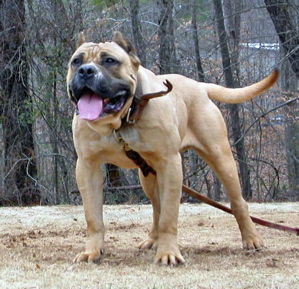Anthony Donskov
Anthony Donskov is the founder of DSC where he serves as the Director of Sport Performance. Donskov holds a Masters Degree in Exercise Science & is the author of Physical Preparation for Ice Hockey.
The Second Set Grind
- Font size: Larger Smaller
- Hits: 3867
- Subscribe to this entry
- Bookmark
At Donskov Strength and Conditioning we are always trying to find ways to improve our current programming. Our Athletic Development Programs run year round (Summer, Fall, Winter, Spring) and cater to the competitive high school athlete. Many times our programs are a mix of returning/new athletes, which can pose to be an arduous task for accurately proving loading parameters for athletes with varying training experience. Our programs incorporate undulating stress levels that are manipulated every three weeks (ex. 4/week split program: Athlete gets 6 exposures to the stress, than it is changed). Below are several of the many loading choices that coaches can incorporate into their programs dependant upon training status.
- Linear Loading: Volume and Intensity are inversely related. As volume decreases, intensity increases over a period of time.
- Undulating Load: Volume and Intensity fluctuate throughout the coarse of the program.
- Volume Loading: Intensity remains constant as volume increases.
- Concentrated Loading: Both intensity and volume are increased (highly demanding).
- Uniform Loading: Intensity and volume remain constant.
Although our program incorporates undulating stress levels, the way we load our new/beginner athletes during individual training sessions is different than how we load our returning athletes. Below is an example.
New Athlete: Progressive Load
Exercise: 3x8 Bench Press
Warm Up Set #1: 80 lbs.
Warm Up Set #2: 90 lbs
Set 1: 100 lbs.
Set 2: 105 lbs.
Set 3: 110 lbs
In the above example we are progressively overloading the athlete during each set. In addition we always start conservatively with our beginners. We have made phenomenal gains by simply adding 5 pounds to the exercise if all reps are attained with technical proficiency. However, this loading only works for a limited amount of time before athletes can no longer handle the weight leaving reps unaccounted for.
Second Set Grind: a.k.a. The “Big Dog Set”
Ok! I know the name seems kind of silly, but our athletes at Donskov Strength and Conditioning have embraced the terminology! Last summer (2011), many of our returning athletes left reps “under the bar” failing to attain all of the desired repetitions (their neuro-muscular systems were fried by the time their final “working set” came around). If we were trying to embrace Coach Boyles’ “minimally effect dose” philosophy, we were overdosing our athletes with stress. This year, we have adopted the second set grind a.k.a. The “Big Dog” Set. Here are a few details about the set.
- Big Dog set is always the 2nd “working set”
- Load (pick a weight where you can leave 1-2 reps in the bank)
- Attain all desired reps
- Deload 3rd “working set”

Returning Athlete
Exercise: 3x8 Bench Press (assuming 200 lb bench)
Warm Up Set #1: 115 lbs.
Warm Up Set #2: 135 lbs.
Set 1: 155 lbs. (78% of 1RM)
Set 2: Big Dog 160-165 lbs. (80-82% of 1RM)
Set 3: 145 lbs (72% of 1 RM)
We have had great success in strength gains this summer using the “Big Dog ” set for our core lifts (hang clean, bench press, trap bar DL and rear foot elevated split squats). Our athletes also feel refreshed and revitalized. We have even used this model with our AMRAP’s (As Many Reps as Possible) that are performed during the last week of our current phase. Here is how it looks.
Before “Big Dog”
Athlete
Exercise: Chin Up
Set 1: x8
Set 2: x8
Set 3: AMRAP
“Big Dog”
Athlete
Exercise: Chin Up
Set 1: x8
Set 2: AMRAP
Set 3: x8 (deload may use bands of assistance)
When comparing the numbers of previous programs, our athletes have improved dramatically using this method. They are simply “fresher” and not as neurally fatigued allowing them to perform a high volume with technical precision.
* Side Note: We document ALL loads used. We do not use 1RM charts as our athletes’ 1RM’s constantly fluctuate due to their training age. If the weight is too light, we simply count the rep as a first set weight or document the word “heavier” with a number 1-5 (1=too light, 5=extremely heavy) for the following exposure.
As the great Coach Charlie Francis remarked: “Smaller CNS demands over a longer period of time result in more acceptance and greater improvement, while the rush to get more done leads to uncertainty down the road.” We are simply trying to coax the gains with this group of athletes, not force them. In my opinion, the biggest mistake a Coach can make “is striving to obtain an increase in the athlete’s fitness level as soon as possible; increasing the training volume/loads too aggressively” (Verkhoshansky). Our “Big Dog ” set has allowed us to stay fresh, have fun and embrace the “smaller CNS demands” that aid in athletic development.
Anthony Donskov, MS, CSCS, PES, is a former collegiate and professional hockey player, founder of Donskov Strength and Conditioning Inc., (www.donskovsc.com) and Head Instructor/Director of Off-Ice Strength and Conditioning for Donskov Hockey Development (www.donskovhockey.com). He can be reached at info@donskovsc.com .
Facebook: http://www.facebook.com/pages/Donskov-Strength-and-Conditioning-Inc/111694352189187
Twitter: http://twitter.com/Donskovsc
